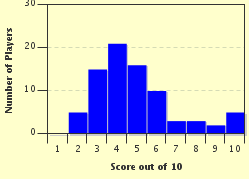Quiz Answer Key and Fun Facts
1. Who led the National Union of Women's Suffrage Societies, founded in 1897?
2. Were there any men who believed women should have the right to vote?
3. Which year became a turning point for British suffragettes?
4. In July 1909, Marion Dunlop was imprisoned for vandalism. What did she do that would eventually see her released?
5. Suffragette Emily Davison died on July 8th, 1913. What was the cause of death?
6. In 1909, what did the Women's Social and Political Union (WSPU) begin selling to raise awareness of women's suffrage?
7. Many organisations have a symbol or colour scheme that represents them. What was the colour scheme adopted by the Women's Social and Political Union (WSPU)?
8. In the early 1910s, approximately how many British suffragettes were sent to prison?
9. What happened in direct response to the passing of the Prisoners Temporary Discharge for Ill Health Act?
10. In what year did the British Government finally start allowing women to vote?
Source: Author
ElusiveDream
This quiz was reviewed by FunTrivia editor
bloomsby before going online.
Any errors found in FunTrivia content are routinely corrected through our feedback system.

